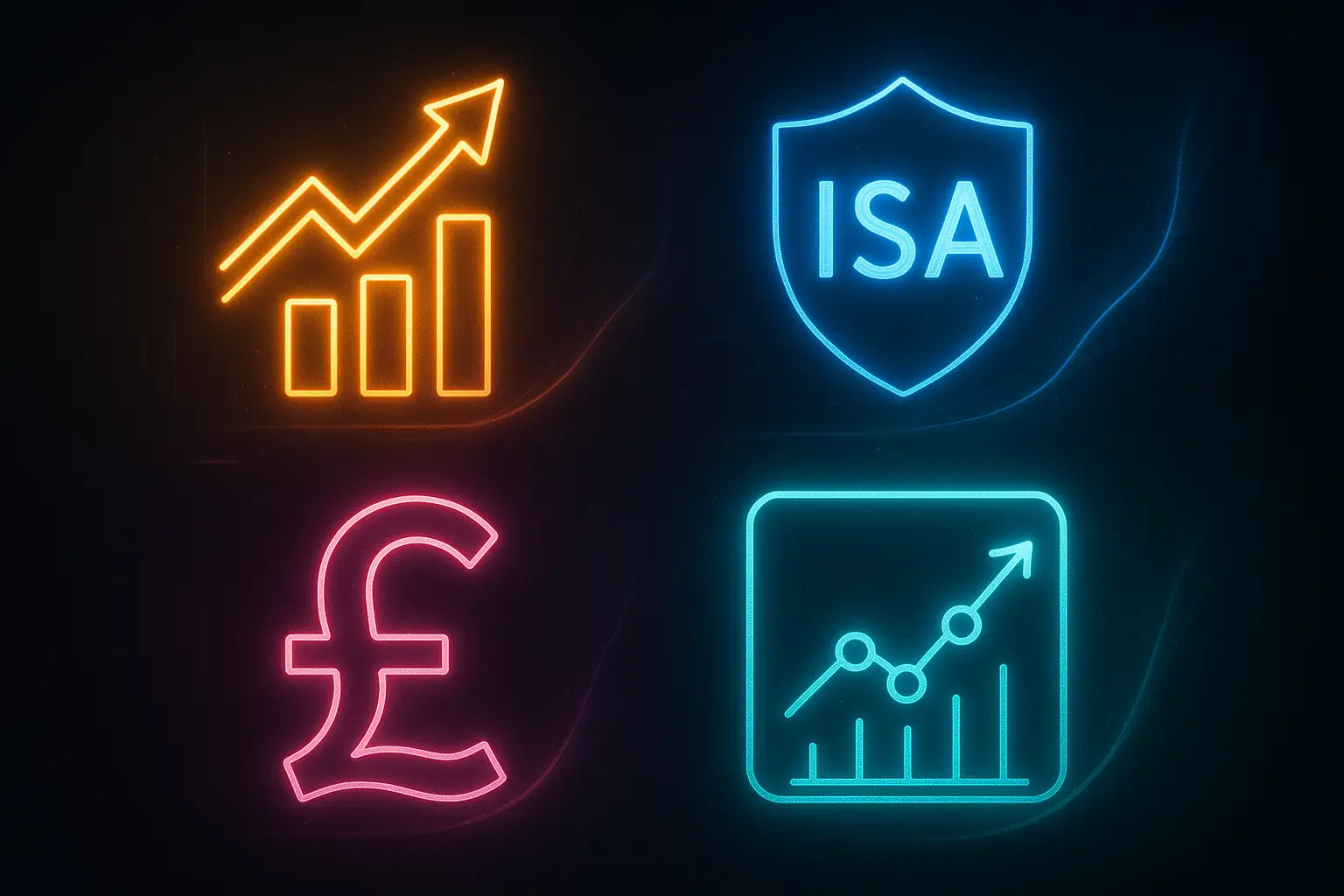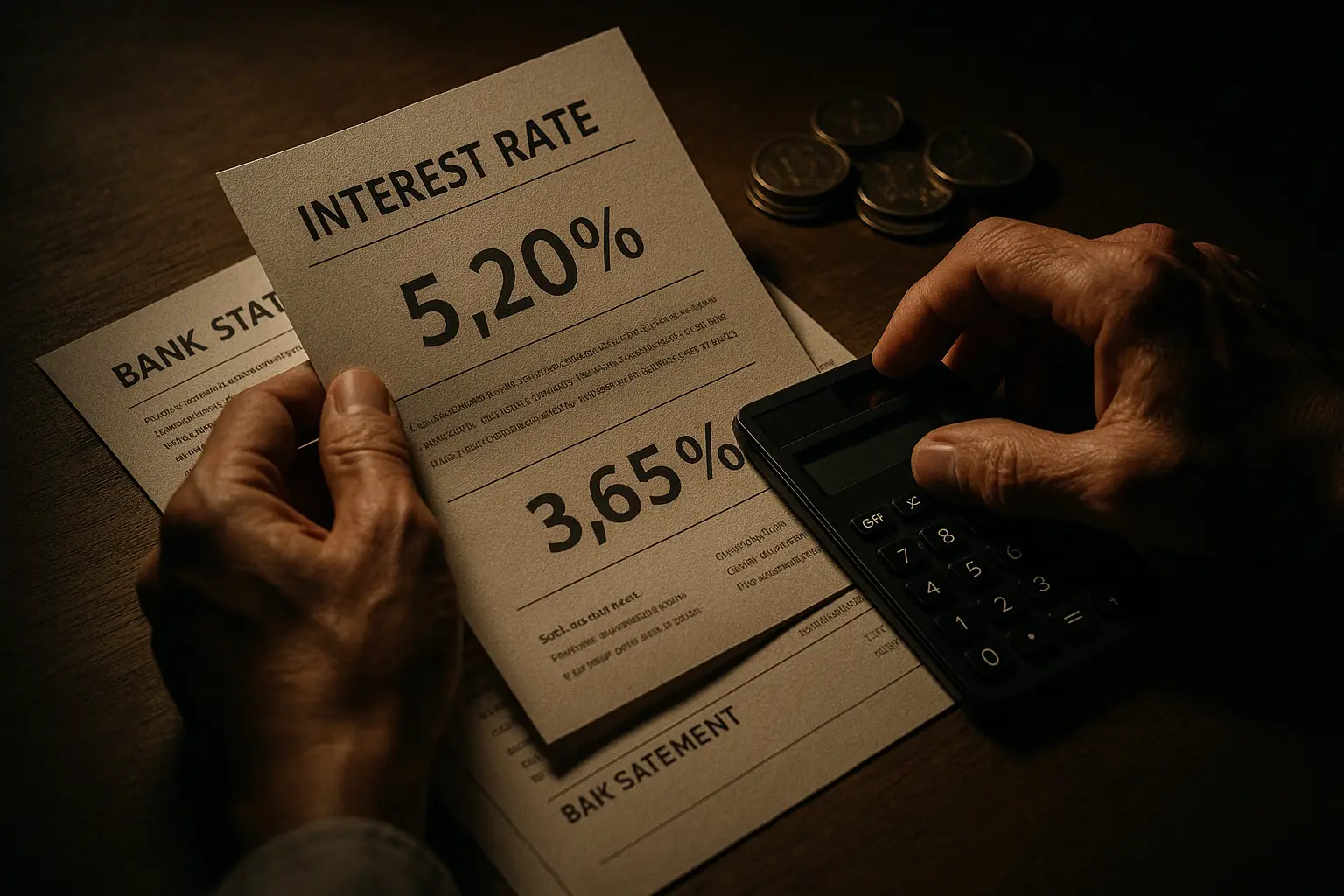What is a stocks and shares ISA?
A stocks and shares ISA allows UK residents to invest up to £20,000 per tax year in shares, funds, and bonds without paying tax on the gains or income, making it a popular choice for long-term wealth building. This tax wrapper helps protect your investments from capital gains tax and dividend tax, potentially boosting returns over time. For 2025/26, the ISA allowance remains £20,000 across all ISA types, as confirmed by HM Revenue & Customs (HMRC guidance, accessed 2025).
Benefits and tax advantages
The main benefit is tax-free growth; for example, if your investments yield 7.2% annual returns as averaged over the past five years ending 2025, you keep every penny of profit. Unlike taxable accounts, there’s no 20% basic rate tax on dividends or 10-20% on gains, which can save thousands for moderate investors. This makes stocks and shares ISAs ideal for those eyeing retirement or major goals, with historical data from MoneySavingExpert showing strong performance against inflation.
How it differs from cash ISAs
While cash ISAs offer secure, interest-bearing savings similar to a bank account, stocks and shares ISAs involve market investments with potential for higher returns but also volatility. Cash ISAs suit short-term savers, yielding around 4-5% in 2025, whereas stocks and shares can deliver more over time, though with risk of loss. If you’re new to investing, start small in a stocks and shares ISA to balance growth and safety.
Eligibility and allowance
You must be 18 or over and a UK resident to open one, with the £20,000 allowance resetting each tax year from 6 April to 5 April. You can split the allowance across ISAs, but total contributions can’t exceed it. For families, consider junior versions for children under 18, though this article focuses on adult options.
Top stocks and shares ISA providers in the UK for 2025
The best stocks and shares ISA providers in 2025 prioritise low fees, wide investment choices, and user-friendly platforms, with Hargreaves Lansdown, Vanguard, and AJ Bell leading based on recent comparisons. These providers cater to UK investors seeking tax-efficient growth, updated for 2025 trends like rising interest in sustainable funds. According to Which?, 71% of investors now focus on low fees when choosing.
Hargreaves Lansdown overview
Hargreaves Lansdown (often called HL) serves over 1.3 million clients with an average account size of £25,000, offering access to 3,000 funds and expert research tools. Its platform suits intermediate investors, with strong educational resources for navigating markets. Fees include a 0.45% annual charge, but it’s praised for reliability in 2025 reviews from Which?.
Vanguard features
Vanguard stands out for passive investing, with UK platform fees averaging 0.15% on index funds and no ETF trading costs in 2025. It offers low-cost ETFs tracking global markets, ideal for buy-and-hold strategies. The simple interface appeals to beginners, as noted in MoneySavingExpert’s guide.
AJ Bell comparison
AJ Bell charges £1.50 per trade for frequent users and a 0.25% platform fee capped at £3.50 monthly, making it cost-effective for active traders. With 6,000 investment options, it balances affordability and choice better than pricier rivals. 2025 updates include improved mobile apps, per Kepler Trust Intelligence.
Other notable providers
Interactive Investor and Fidelity also rank highly among the best stocks and shares ISA providers UK 2025, with flat fees around £10-20 monthly for unlimited trades. For lifetime ISA seekers, providers like Moneybox offer stocks and shares variants with government bonuses for first-home buyers. Junior ISA options from Nutmeg provide automated portfolios for children.
| Provider | Annual Platform Fee | Trading Costs | Fund Range | Trustpilot Score |
|---|---|---|---|---|
| Hargreaves Lansdown | 0.45% | £11.95 per trade | 3,000+ | 4.2/5 |
| Vanguard | 0.15% | Free on ETFs | 80+ | 4.1/5 |
| AJ Bell | 0.25% (capped £3.50/m) | £1.50 frequent | 6,000+ | 4.3/5 |
| Interactive Investor | Flat £4.99-£19.99/m | One free trade/m | 40,000+ | 4.0/5 |
| Fidelity | 0.35% (tiered) | Free funds | 7,000+ | 4.4/5 |
Tip: Use a fee calculator from comparison sites to estimate costs based on your investment size and activity level before committing.
Comparing fees and charges across providers
Fees can erode returns, so the best stocks and shares ISA providers UK keep them under 0.5% annually; in 2025, expect slight rises due to regulatory changes but caps on many platforms.
Platform and trading fees breakdown
Platform fees cover administration (e.g., Vanguard’s 0.15%), while trading fees apply per buy/sell (AJ Bell’s £1.50). HL’s structure suits larger portfolios, but low-volume investors save with Vanguard. Overall, 71% prioritise these, per Which? 2025 survey.
Hidden costs to watch
Watch for FX fees on international trades (1-1.5%) or exit charges when switching. Some providers add custody fees, though most like Fidelity waive them for funds. Always review the Key Information Document for full transparency.
Fee calculators and tools
Many sites offer tools; for instance, Moneyfacts provides ISA comparisons including stocks and shares options. Input your expected trades to compare net costs.
Key features and investment options
Top providers offer diverse funds, ETFs (exchange-traded funds tracking indices), and shares, with 2025 emphasis on ESG (environmental, social, governance) options.
Fund and ETF selection
Vanguard excels in low-cost index funds, while HL provides active funds for those seeking manager expertise. AJ Bell’s 6,000+ choices include global ETFs, suiting diversified portfolios.
App and platform usability
Mobile apps from AJ Bell and Vanguard score high for real-time tracking, with intuitive dashboards for beginners. HL’s Wealth Shortlist tool aids fund picks.
Customer support quality
Expect phone, chat, and email; HL leads with dedicated advisors, though wait times vary. Trustpilot reviews highlight responsive service across leaders.
Provider reviews and customer satisfaction
Independent ratings place AJ Bell and Fidelity at 70-80% satisfaction, per Which? 2025, with users praising ease but noting app glitches at HL.
Independent ratings
Kepler Trust rates Vanguard top for value, HL for research. Overall, scores reflect reliability in volatile markets.
Pros and cons
Pros: Tax savings, growth potential. Cons: Market risk, fees. For the best stocks and shares lifetime ISA providers, consider bonus-eligible options.
User experiences
Users on forums report smooth transfers at Vanguard but slower at HL. 2025 reviews emphasise app improvements.
How to choose the best provider for you
Assess your goals: low fees for passive, research for active. For more on the best stocks and shares isa, see our pillar guide. Compare via tools for the best stocks and shares isa uk options.
Beginner vs advanced investors
Beginners should opt for Vanguard’s simplicity; read our best stocks and shares isa for beginners article. Advanced users benefit from HL’s tools.
Switching providers guide
Transfer existing ISAs tax-free via the new provider; it takes 2-4 weeks. Check for exit fees.
2025 considerations
With potential rate cuts, focus on dividend funds. This is not financial advice; consult a professional.
Frequently asked questions
What are the best low-fee stocks and shares ISA providers?
Vanguard and AJ Bell top the list for 2025 with fees under 0.25%, ideal for cost-conscious UK investors maximising the £20,000 allowance. These providers eliminate trading charges on popular ETFs, potentially saving £100+ yearly on moderate portfolios. Compared to higher-fee options like HL, they suit passive strategies, though active traders may prefer flat-fee models from Interactive Investor.
How do stocks and shares ISAs work in the UK?
You open an account with a provider, contribute up to £20,000 yearly, and invest in assets like shares or funds within the tax wrapper for growth without capital gains tax. Returns average 7.2% over recent years, but values can fall, so diversify. It’s regulated by the FCA, ensuring protection up to £85,000 via FSCS for cash holdings.
Which provider is best for beginners in 2025?
Vanguard is often recommended for its low 0.15% fees and simple ETF access, helping new investors build without complexity. Platforms like Nutmeg offer robo-advisory for automated management, reducing decision stress. Start small to learn, as market volatility requires patience; reviews show high satisfaction among novices.
What are the fees for stocks and shares ISAs?
Fees typically include 0.15-0.45% platform charges plus £0-£12 per trade, varying by provider and activity. In 2025, 71% of users prioritise these, with caps preventing escalation on larger sums. Use calculators to project; hidden costs like FX add 1%, so compare thoroughly for net impact.
Which provider has the lowest fees in 2025?
Vanguard leads with 0.15% on funds and free ETF trades, outperforming rivals for long-term holders. AJ Bell follows at 0.25% capped low, suiting occasional traders. These edge out others amid rising costs, per Which? data, but check for minimums on small accounts.
Is a stocks and shares ISA worth it for advanced strategies?
Yes, for tax-free compounding on diversified portfolios, especially with 2025’s market recovery potential. Advanced users leverage HL’s research for active picks, mitigating risks via hedging. However, balance with non-ISA accounts if exceeding allowance; historical 7.2% returns justify for growth-oriented investors.





